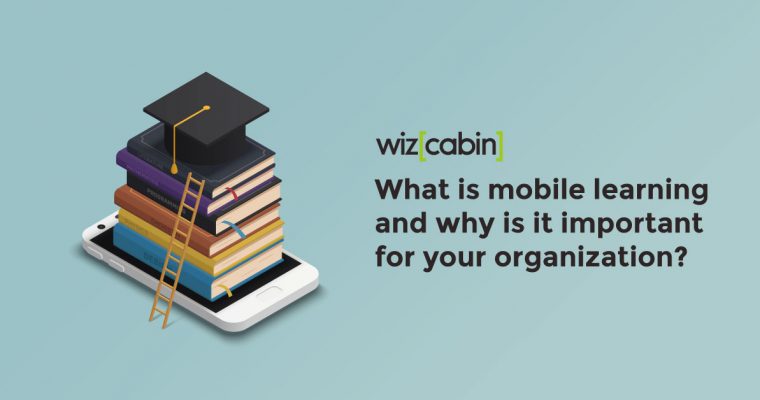Mobile learning is one of the effective techniques that can help you to deliver a better learning experience. In case you’re interested in developing mobile-friendly training content, it’s worth knowing that the learning strategy has its benefits and challenges.
However, in case you’re not aware of that, a recent study reveals that about 45% of the world’s population owns a smartphone. Also, the study reveals that about 61.28% of the world’s population (4.8 billion) owns a smart and feature phone.
This is different from what it used to be in the past. Furthermore, according to a study by Fluentco, about 75% of Americans say they use their smartphones most often to check email.
In this post, we’ll be sharing with you everything that you need to know about m–learning, including its benefits and challenges. And without further ado, let’s dive right in.
What is mobile learning and why is it important for your organization?
According to Geddes’ definition in 2004, mobile learning or m-learning is a learning approach that enables learners to acquire any knowledge or skill through using their mobile devices, anywhere, anytime.
Although m-learning has been around for a while, the advancement in technology has made it even more essential for all organizations to use in today’s world.
According to a study, most employees and learners now prefer to get online information via their mobile devices. That’s because, with m-learning, you need not worry about the time or your location, so far you have your smartphone and internet connection.
As earlier mentioned, mobile learning has a lot of benefits and challenges. Before going into the challenges, let’s quickly look at some of the benefits of mobile learning below:
1- Increase in the rate of course completion
One of the benefits of mobile learning for organizations is that it helps to achieve better course completion rates. How do I mean? It’s no more news that we’re in the age where time is a very important factor for everybody.
With mobile learning, you won’t have to worry about time. That’s because you can always learn anywhere and anytime using this learning strategy, as it allows for flexibility.
Furthermore, by giving your learners the ability to access your eLearning content wherever and whenever they want, you’ll be able to achieve a successful course completion.
2- You can use it to diversify learning
Another benefit of mobile learning is that it can be utilized to diversify learning. With that, it means you can deliver the learning in various ways, including through microlearning, webinars, online courses, and face-to-face workshops.
Speaking of microlearning, which is the delivery of eLearning content in bite-size, there are lots of benefits attached to it. Well, you can check here to read about how the learning technique will benefit your business.
Furthermore, this eLearning trend is a natural fit for mobile learning. With short modules, learners can easily acquire knowledge via their mobile devices and apply it to their jobs.
3- Improves knowledge retention
Mobile learning is important as it helps to boost employee retention ability. For instance, the use of short videos as your mobile learning content can help your learners to retain knowledge and recall information easily.
Challenges of m-learning
Now that we’ve mentioned some of the benefits of mobile learning, let’s quickly have a look at its challenges below.
1- Data privacy and security
In case you’re considering mobile learning, one of the challenges that you’ll likely encounter is data privacy and security concerns. However, you need not worry too much about this, as there are ways you go about addressing the issue.
With mobile learning, learners are often encouraged to access training using their mobile devices. Online training programs tend to expose sensitive information regarding the company and its learners to the outside world.
As such for an organization to start a mobile training course, it must first address the issues attached to mobile traffic. One way to do that is to check for vulnerability in your server and address it. Furthermore, you may also make it compulsory for all the learners to install a certain antivirus before accessing the training program.
2- Compatibility of your content
Another challenge that you’ll likely encounter with mobile learning is content compatibility. Most times, content created for eLearning purposes doesn’t always work on mobile devices.
In this case, you’ll have to refurbish or recreate them so they can be accessed by mobile learners – this is mostly time and effort demanding. Apart from that, mobile devices come in different sizes, meaning that you’ll also need to create such content in various formats.
Surely, you’ll agree that this can bring about challenges and confusion. Well, you need not worry about that, as there are some authoring tools that you can use to address this issue. These types of authoring tools, such as our very own “Wizcabin”, makes it very easy for you to curate content for multiple devices and platforms.
3- Small screens can cause big pains
Another challenge of mobile learning is that the continuous reading of text on small screens can hurt the eyes. However, you need not worry too much about it as there are solutions to address this issue.
One of them is the use of virtual reality add-ons. Apart from that, you must ensure that you make your learning content as short as possible, in order to reduce the extension in their viewing times.







